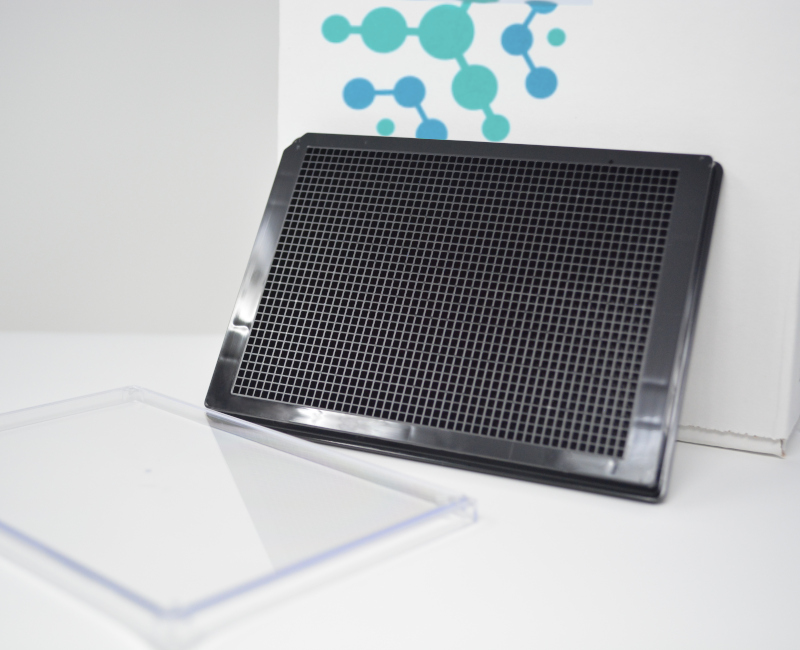
EVOLUTION FROM 2D to 3D CELL CULTURES
Cell culture is an important and necessary tool in drug discovery, cancer research as well as in stem cell studies. Cells are cultured using two-dimensional methods, but new and improved methods have now evolved and implemented 3D cell culture techniques. When performing 3d cell culture experiments, the cell environment needs to be manipulated to. Mimic the cells in vivo to provide more accurate information about cell-to cell interaction, tumor characteristics, drug discovery, metabolic profiling, and study various types of diseases. There are scaffold-based techniques including hydrogel-based support, polymeric hard material support, hydrophilic glass fiber to name a few. Likewise, there are scaffold free techniques to create these 3D cell cultures namely hanging drop microplates, magnetic levitation and spheroid microplates with ultra-low attachment coating. (1)
3D CULTURING METHODS: design the spheroids according to your experimental needs
Scaffold based techniques provide an array of advantages. Hydrogels are unique because of fact that they are able to mimic the extra cellular matrix while allowing soluble factors such as cytokines and growth factors to travel across the tissue like gel. (2) They are also versatile in the fact that they can also be used to create spheroids and can be prepared and processed in multiple ways depending upon the experiments performed. Recent studies have stated that the 3D models allow for drug screening as well as for noticing different cell shapes, cell density and drug sensitivity when compared to the cells cultured on monolayer. (3)
The use of hydrophilic glass fibers is still to be explored but offers an abundance of potential. Organoids aggregate into spheroids by forming ECM fibers that link single cells together via integrin binding and mimic the microenvironment of certain organs to allow researchers to model human diseases through the use of patient-derived pluripotent stem cells. (4)
ADVANTAGES OF SCAFFOLD FREE TECHNIQUES:

Scaffold free techniques are unique in their ability to freely grow with no scaffold and provide special advantages as a result. Hanging drop plates allow the formation of spheroids aggregation using gravity. The spheroids hang in open bottomless wells which are often enclosed in the bottom of the plate to regulate the environmental humidity of the cells. Magnetic levitation is also performed by injection cells with magnetic nanoparticles which allows the cell to aggregate into a spheroid when exposed to an external magnet. This creates a concentrated cell environment in which ECM can be synthesized and analyzed via western blotting and other biochemical assays. (5)
To conclude, both 2D and 3D cell culture techniques provide methods necessary for advancing research, 3D cell culturing methods are beginning to outperform old 2D cell culture methods even though 3d cell culture is still in its developing stages. The benefits of culturing cells in 3D are superior to that of 2D cell culturing and as the techniques for tissue engineering improve, tumor models, cancer treatment therapies and diseases testing methodologies will improve.
REFERENCES:
1. Is It Time to Start Transitioning From 2D to 3D Cell Culture?Jensen Caleb1,2 and Teng Yong1,3,4,5*, 1 Department of Oral Biology and Diagnostic Sciences, Dental College of Georgia, Augusta University, Augusta, GA, United States , 2 Department of Biology, College of Science and Mathematics, Augusta University, Augusta, GA, United States , 3 Georgia Cancer Center, Medical College of Georgia, Augusta University, Augusta, GA, United States , 4 Department of Medical Laboratory, Imaging and Radiologic Sciences, College of Allied Health, Augusta University, Augusta, GA, United States , 5 Department of Biochemistry and Molecular Biology, Medical College of Georgia, Augusta University, Augusta, GA, United States , March 2020
2. Langhans, S. A. (2018). Three-dimensional in vitro cell culture models in drug discovery and drug repositioning. Front. Pharmacol.
3. Van-Minh, L., Mei-Dong, L., Wei-Bin, S., and Jian-Wen, L. (2016). A collagen-based multicellular tumor spheroid model for evaluation of the efficiency of nanoparticle drug delivery. Artif. Cells Nanomed. Biotechnol.
4. Yin, X., Mead, B. E., Safaee, H., Langer, R., Karp, J. M., and Levy, O. (2016). Engineering stem cell organoids. Cell Stem Cell 18, 25–38.
5. Haisler, W. L., Timm, D. M., Gage, J. A., Tseng, H., Killian, T. C., and Souza, G. R. (2015). Three-dimensional cell culturing by magnetic levitation.


